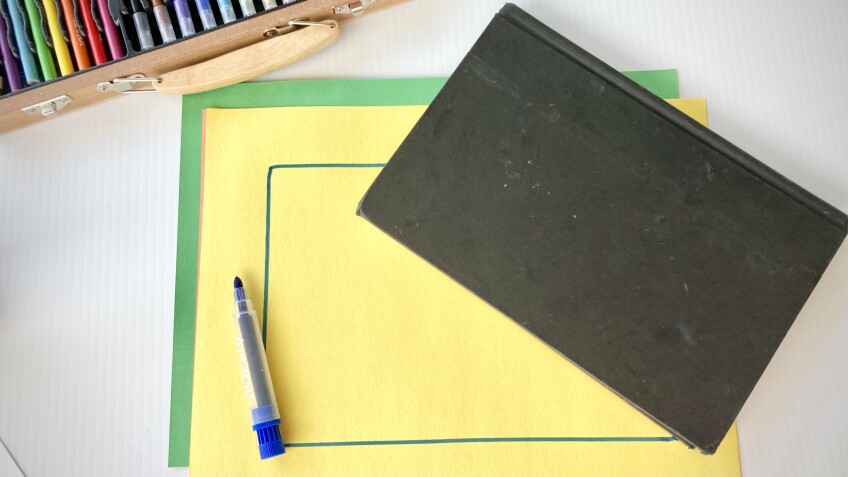Family Math Activity: Design Your Own Postage Stamps

"Mom come see my art," my preschooler said as she placed the last of 10 postage stamps on her masterpiece.
Postage stamps may resemble stickers to our little ones, but when we place a tiny stamp on the upper right corner of an envelope, our community mail carrier delivers it to our loved ones, neighbors, or even those worldwide! The people, places, and themes depicted on stamps represent an important part of our shared culture.
Have fun creating your own stamps at home and practice early math skills like shape recognition, location and position words and patterns. Embrace your child's interests and promote self-awareness as you cut and color your own designs.
Learning Goal
- Practice early math skills like spatial sense using location and position words, shape recognition and patterns.
- Consider interests and practice self-expression.
Materials

- Paper
- Small circular object (like a quarter, bottle top, or paper towel tube)
- Rectangular object (like a book or tissue box)
- Blunt-tip scissors
- Markers, crayons or other art supplies
Step-by-Step Instructions
1. Observe. Look at different stamps in your mailbox or online, like the Cesar Chavezstamp from 2003 and the California Statehood stamps. Talk to your child about the shape of the stamps, noticing how some rectangles are horizontal or vertical. To practice recognizing shapes, point out that rectangles can be different sizes, but all have four sides and four corners. Then, use location and position words to talk about where stamps go on envelopes.
2. Draw a rectangle on the paper. The rectangle will mark the space between where you draw and create the stamp's wavy edge. You might consider tracing a book or tissue box to make drawing the rectangle easier.

3. Trace a semicircle pattern around the edges of the rectangle to create the stamp's wavy edge. Talk to your child about patterns and semicircles as you make the edge. Ask your child where they see other semicircles around their home or neighborhood.

4. Cut the wavy lines. Have your child cut out the semicircles with blunt-tipped scissors. Remember, it's more about the process than the final product!
5. Think about your design. Stamps often feature noteworthy places or people. One of them is Californian Cesar Chavez, who was an advocate for farmworkers' rights. To celebrate his legacy, in 2003, a stamp with his face on it was issued, and Cesar Chavez Day is celebrated nationwide every year on March 31. California's beautiful landscapes have also been featured on several California Statehood stamps.
Ask your child to consider what other role models or places should be featured on a stamp. Before you start drawing, talk about what is important to your child, their community, or your family's heritage. It might serve as inspiration! When our children think about these interests, they practice self-awareness and self-expression.
6. Get Creative! Use markers, crayons, construction paper, or other household art supplies to bring their ideas to life.
Keep the Conversation Going
Once you're done, keep playing with mail and math with these ideas:
- Make mail observations. When a new piece of mail arrives in your mailbox, make observations about the stamp together. Ask your child what colors, images, words, or people are on the stamp. Talk about the significance of the person, theme, phrases, or place featured.
- Pick a stamp, any stamp. Next time you buy a book of stamps at your local post office or grocery store, let your little one choose the stamp design. Simple two-option choices help young children practice decision-making skills. Point out the different sizes and shapes available.
- Send mail. Have fun mailing a letter or a high five to faraway family or friends. Maybe you can help find your child a pen pal to send mail to on a regular basis.
Collaborating together, creating art and practicing early math skills all at the same time — now that gets a stamp of approval.



